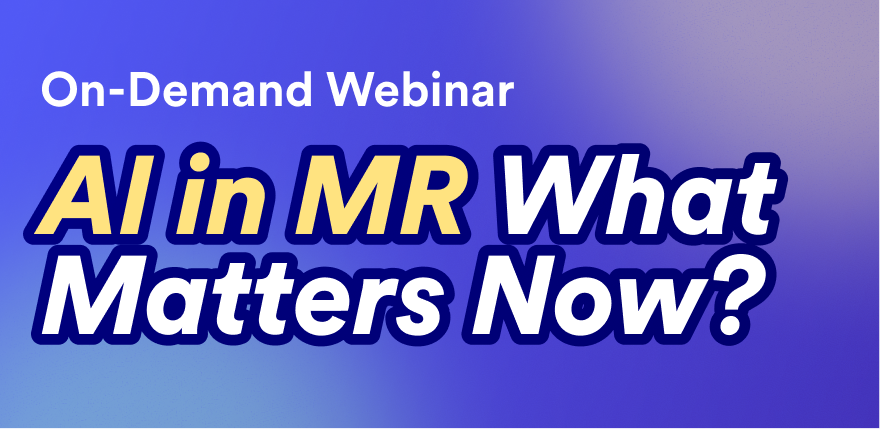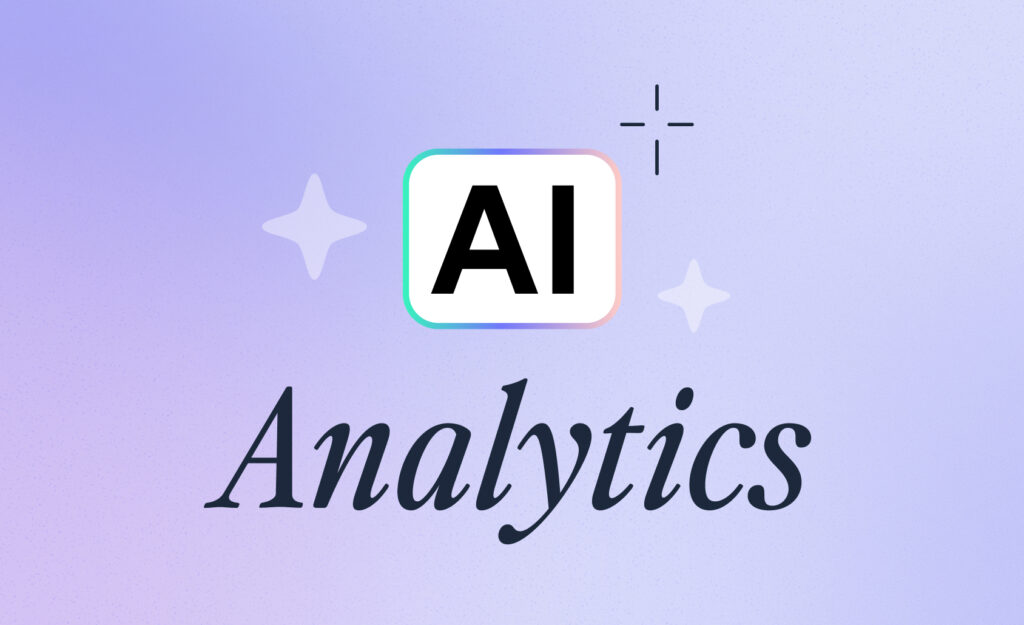When it comes to trending topics in market research, artificial intelligence (AI) and data analysis sit comfortably at the top of the list. So what happens when you combine these two approaches?
Enter AI analytics. AI analytics is how thousands of market researchers, data scientists, and insights professionals are transforming raw data into insights at rapid speed. It's how data analytics has become more accessible than ever. It's how organizations are uncovering hidden trends and patterns that traditional analytics might miss.
But it comes with its challenges. From ensuring data quality and overcoming integration hurdles to addressing issues of transparency and ethical considerations, adopting AI analytics requires careful planning and a clear understanding of its capabilities and limitations.
So, what exactly is AI analytics, and how does it differ from traditional data analysis? Let’s break down the fundamentals before diving deeper into how it’s transforming the way businesses approach data.
What Is AI Analytics?
AI analytics is the use of artificial intelligence techniques to automatically analyze data, uncover patterns, and generate insights faster than traditional analytics. It combines machine learning, automation, and natural language processing to make data analysis more scalable and accessible.
This can take place in so many forms, from utilizing Natural Language Processing to identify patterns in text data, to the use of predictive models to forecast future trends and outcomes.
Put simply, if it is a data analysis technique that has been accelerated with AI, it's an example of AI analytics. Other examples include:
- Anomaly detection: AI systems can automatically scan large datasets to identify unusual patterns or outliers—such as unexpected spikes in network traffic or irregular financial transactions—helping organizations quickly spot issues like fraud, equipment failures, or cybersecurity threats.
- Automated business monitoring: AI continuously tracks key performance metrics and instantly alerts teams to significant changes, enabling faster responses to emerging opportunities or risks without manual oversight.
- Supply chain optimization: AI analyzes real-time and historical data to predict demand fluctuations, identify bottlenecks, and recommend adjustments, allowing businesses to streamline operations and reduce costs.
These examples show how AI analytics extends far beyond traditional methods, enabling faster, more proactive, and scalable insights across industries.
How AI-Driven Data Analytics Works
At its core, AI-driven data analytics combines advanced algorithms with automation to process, analyze, and visualize data in real time. Unlike traditional analytics, which typically requires manual coding or step-by-step manipulation, AI systems can automate much of the heavy lifting.
The process usually involves four key stages:
- Data ingestion and preparation: AI systems integrate information from multiple sources—such as surveys, spreadsheets, transaction logs, or customer feedback. They then clean and structure the data, removing inconsistencies or errors to ensure accuracy before analysis.
- Pattern recognition and insight generation: Once data is prepared, algorithms uncover patterns, relationships, and trends. Examples include customer segmentation, anomaly detection, or identify sentiment from open-ended responses.
- Visualization and reporting: AI tools can automatically generate charts, dashboards, and reports from plain-language instructions. This speeds up the journey from raw data to actionable insights.
- Continuous learning: AI systems adapt to new data and learn from past outputs. Over time, they deliver faster and more precise insights than traditional methods, enabling businesses to stay agile in changing environments.
AI-driven analytics is not just faster, it’s also more adaptive. It brings efficiency and scalability that manual approaches cannot match.
Types of AI Analytics
AI analytics isn't one-size-fits-all. Depending on your data and business needs, various AI-powered techniques can be employed to uncover valuable insights. In Displayr, these span everything from automated text classification to advanced machine learning models.
Here are some of the most commonly used types of AI analytics:
- Text Analytics and Natural Language Processing (NLP): AI can automatically categorize open-ended responses, extract named entities (like brands or people), and detect sentiment - turning unstructured text into structured insights. Techniques like principal component analysis (PCA) for text help surface common themes or underlying dimensions without hours of manual coding.
- Predictive Analytics and Machine Learning: Whether you're forecasting future behavior or identifying likely outcomes, machine learning algorithms like random forest, deep learning, and gradient boosting help you move beyond descriptive stats. These techniques are all supervised learning algorithms, meaning they can train on data and make predictions.
- Driver Analysis: Driver analysis quantifies the importance of several predictor variables in predicting an outcome variable. With AI, this process becomes faster, more robust, and easier to interpret.
- Choice Modeling and Experimental Design: AI also plays a key role in automating and optimizing complex choice models. In Displayr, you can use Hierarchical Bayes estimation to analyze MaxDiff and conjoint data, simulate preference shares, and even test product configurations before launch.
Benefits and Challenges of AI Analytics
Like anything, AI analytics carries with it a list of pros and cons. While there is clearly enormous productivity gains to be made, you should always weigh up the potential risks that come with implementing this type of technology. Some points to consider:
Benefits
- Speed and efficiency: AI automates repetitive tasks such as cleaning data, detecting anomalies, or running large-scale models, which dramatically reduces time-to-insight.
- Deeper insights: Algorithms can uncover patterns, correlations, and outliers that are often missed by traditional methods. This allows teams to move beyond “what happened” into “why it happened” and “what will happen next.”
- Scalability: AI handles massive, complex datasets without the bottlenecks of manual analysis, making advanced analytics accessible to more teams across the business.
- Accessibility: With natural language prompts and intuitive interfaces, non-technical professionals can now use AI analytics, broadening the pool of people who can generate insights.
Challenges
- Data quality: AI can only perform as well as the data it’s given. Inconsistent, biased, or incomplete data will lead to poor insights.
- Transparency: Many AI models operate as “black boxes,” making it difficult to explain how certain conclusions were reached. This can limit trust and adoption.
- Integration hurdles: Combining data from multiple systems or legacy platforms is often complex, requiring significant planning and technical resources.
Practical Applications of AI Analytics
AI analytics is revolutionizing how businesses across sectors turn data into smarter decisions. With Displayr’s built-in AI capabilities, organizations can automate complex analysis, extract deeper insights from survey data, and scale reporting with ease.
Here’s how AI analytics is being used across key industries:
- Insights Teams & Market Research Firms: Survey analysis and automated reporting: Market researchers need to deliver insights fast. Displayr uses AI to streamline end-to-end survey analysis - from cleaning data and identifying themes in open-ends, to creating interactive dashboards and PowerPoint-ready reports. This reduces manual effort, increases throughput, and frees up time for deeper storytelling.
- Retail & Consumer Goods: Customer feedback analysis: AI-powered text analytics automatically detect sentiment, group similar responses, and surface key themes - helping teams stay close to the customer and respond quickly to emerging issues or opportunities. Whether it's product reviews or post-purchase surveys, insights are generated in minutes, not days.
- Technology & SaaS: New product development (NPD): For tech companies developing new features or products, AI accelerates the process of analyzing concept test data, predicting market uptake, and identifying the optimal product mix - reducing time-to-insight and risk.
- Travel & Hospitality: Pricing and trade-off research: Companies in travel and hospitality use choice modeling tools to optimize service bundles and price points. AI analyzes preference data through conjoint or MaxDiff, simulates pricing scenarios, and identifies willingness-to-pay thresholds - all within a single workflow.
How To Get Started With AI Analytics
AI analytics may sound complex, but implementing it doesn’t have to be. A clear, structured approach helps organizations get meaningful results without unnecessary complexity. Here’s a basic overview you can implement today:
- Define your objectives: What do you want to achieve? Are you analyzing customer feedback, testing product concepts, or forecasting demand? Clear goals ensure you select the right methods and avoid drowning in data.
- Prepare your data: Reliable insights come from reliable data. Integrate your sources, clean inconsistencies, handle missing values, and check for outliers. Even with automation, a manual review is worthwhile to safeguard accuracy.
- Apply AI techniques: Once your data is ready, use AI-driven methods such as text classification, predictive modeling, or clustering. These techniques accelerate analysis, reduce manual work, and help uncover patterns that might otherwise be missed.
- Validate and refine results: AI isn’t infallible. Always review outputs to ensure they make sense in context. Adjust parameters, re-check variables, and apply human judgment before acting on findings.
- Iterate and improve: The more you use AI, the better your processes become. Refining prompts, tuning models, and incorporating feedback creates a loop of continuous improvement that sharpens insights over time.
By following these steps, teams can move from raw data to insights faster, while still keeping quality and reliability at the forefront.
Frequently Asked Questions
How does AI analytics reduce reporting time?
By automating data preparation, running analyses, and generating charts and dashboards. Tasks that once took hours can be completed in minutes, so teams spend more time interpreting results and less time assembling them.
How should you interpret results from AI analytics?
Combine model outputs with business context. Use the system to surface patterns, then validate them against known drivers, sample quality, and domain knowledge. Treat outputs as decision support: verify assumptions, check for bias, and confirm alignment with objectives.
How is AI analytics different from traditional analytics?
Traditional approaches rely on manual steps and predefined rules. AI analytics learns from data, adapts to new inputs, and automates much of the workflow, enabling faster, deeper insights across larger and more complex datasets.
What types of data can AI analytics handle?
Structured data (surveys, spreadsheets, transactions) and unstructured data (open-ended responses, reviews, audio, images). This flexibility enables insights across diverse, multi-source environments.
What are practical uses of AI analytics?
Examples include analyzing customer feedback with natural language processing, detecting anomalies indicative of fraud or failure, forecasting demand, segmenting customers, and producing real-time dashboards for decision-making.
Ready to see how Displayr's Research Agent can revolutionize your data analysis?
Try Displayr free today.

